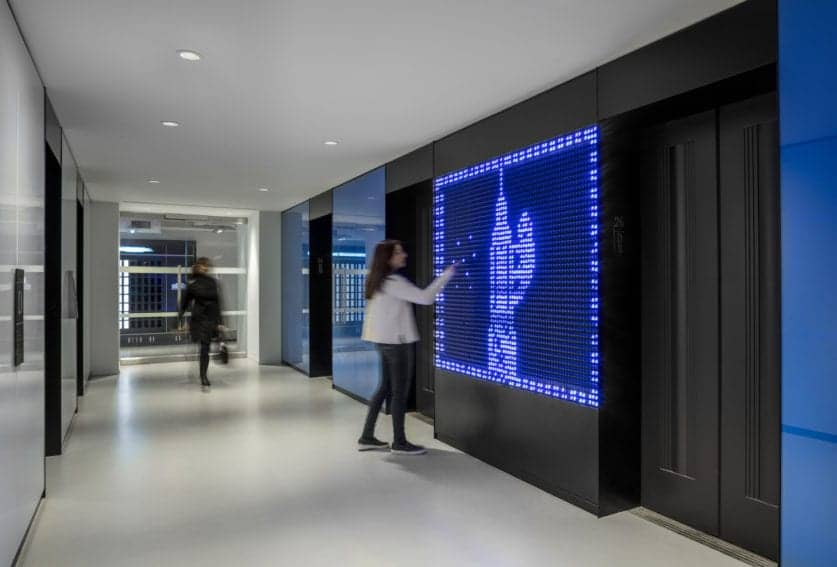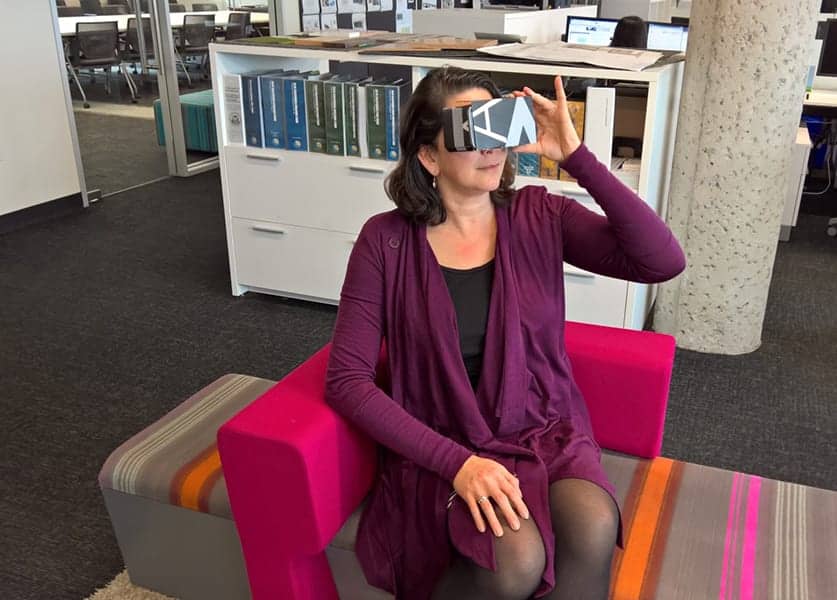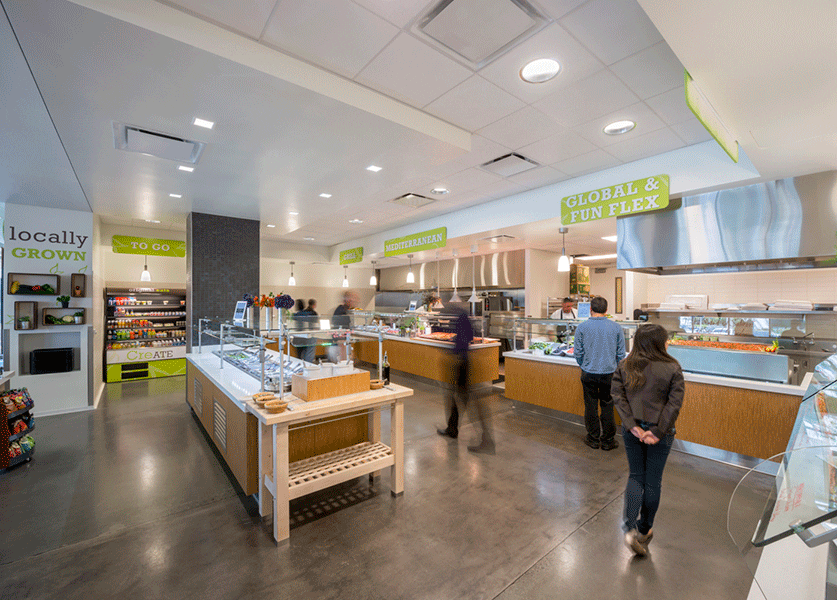By Allison Plavecski | Workplace Strategist
With productivity an on-going concern for most companies, employee disengagement—resulting in more sick days, more turnover, and less profitability—significantly affects the bottom line. But according to a recent Gallup poll, only 15% of employees worldwide are engaged in their job. In a move to increase engagement, many companies are exploring the potential of workplace design to create a sensory-rich experience based on new technologies that enable employees to customize their experience of sight, sound, smell, touch, and taste in line with personal preferences.
Sight
We rely on sight for subtle clues about our surroundings—for example, reading body language to understand how colleagues really feel about a proposed idea. Based on our perception of our surroundings, sight also affects mood. Looking through a window at a sunlit garden will energize you more than working in a dark room. Taking it a step further, using virtual reality and augmented reality headsets, such as Oculus Rift, Snapchat Spectacles, and Microsoft’s HoloLens, we can modify what we see. A recent Samsung ad campaign, featuring an ostrich that learns to fly while wearing a headset, proffers the slogan “Do what you can’t.” What if employees could harness this technology to do what they can’t? For example, technicians could overlay images of instruction manuals in their field of vision as they fix products in real time. Those employees working in a dim interior office could manipulate their view to see a sunny beach and feel more energized.
Smell
Smell has the power to elicit strong emotions and evoke memories; the limbic system, which controls mood and memory, is located next to the olfactory nerve. A test by scent making firm ScentAir found that adding scents to the air delivery of an HVAC system, when done at the correct level and with the right scent, can increase the satisfaction level of building occupants as well as improve their perception of indoor air quality. Another firm, Air Aroma, claims that its scents can reduce clerical errors, reduce stress, and increase creativity when piped thru the office HVAC system. In the future, employees might be able to customize which scents are emitted above their workstations, although in this age of fragrance allergies that might prove challenging.
Touch
An employee’s perception of control over thermal comfort increases job satisfaction and engagement, and individualized controls for thermal comfort preferences are becoming more common. A cutting-edge example is architect Carlo Ratti’s Office 3.0 system. A plethora of sensors monitor employees as they progress through a building. A “thermal cloud” follows each employee and heats or cools the surrounding space based on personal preferences. With this scenario, the unoccupied areas of a building that are not actively heated or cooled, could potentially reduce energy costs, as well as interface with lighting systems.
Sound
Sounds caused by coworkers are routinely cited as the number one distraction at work. Often, employees’ only recourse are noise-cancelling headphones. Studies on the effects of music on the brain have shown that listening to preferred music creates connections between the auditory cortex and the hippocampus, the region of the brain responsible for memory and emotion. Highsnobiety, an online news site, created seven different audio zones in their new office to allow for choice in listening preferences among its different teams. West Elm Stores recently partnered with Sonos to make Sonos’ wireless speakers available for sale in its stores and also to create “listening labs” where shoppers can experience the sounds systems for themselves. In the future, individual listening rooms may become more common in the workplace as companies strive to provide relaxing areas for employees.
Taste
Food has long been a motivator and eating is a necessity. The best company-sponsored food programs empower employees to eat for health while focusing on work (no sugar crashes). On-campus food options create opportunities for social interaction and idea sharing. Google, well-known for its food perks, has determined that three to four minutes in line for lunch is the optimal time required for casual conversations and meeting new people without wasting time. Another option might be a rotating mix of food from area restaurants delivered to the office. Fooda does this for Hulu, among other clients, in Santa Monica, California.
IA plans for the immersive sensory experience when designing every space. Examples include: providing small focus rooms for acoustic privacy, indoor plant walls for connection to nature, and separation of kitchens from the open office to contain food smells. The trend by employers to improve employee wellness and provide opportunities to individualize workspace preferences is not slowing down. What new technologies have you heard about? Do you think they work?
Like What You See?
If you enjoyed this post, then you'll probably enjoy learning about Jamba Juice's sensory-rich headquarters. Click below to see the Jamba Juice case study.
Experiencing the workplace with ALL of our senses!


